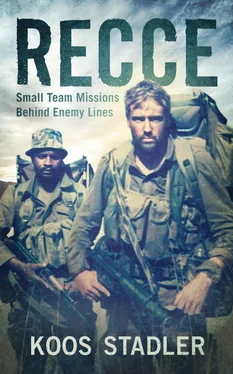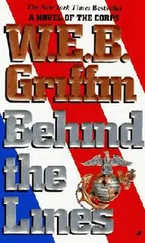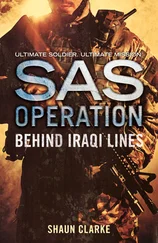Donkergat used to be a whaling station, and the operational base was built over the remnants of the old structures. In fact, the main quay was formed by concreting the hull of one of the trawlers. It also had a quay specially designed for the docking of South African Navy strike craft and Daphne-class submarines, both used extensively for deploying the Recces during operations.
Because of its specialised role, 4 Recce was not an Army unit in the normal sense. Aside from the array of operational boats kept at the boat yard at Salamander, across the lagoon, it had its own little fleet of ferries and a well-equipped boat workshop on the waterfront at Langebaan.
The unit was a world apart. Not only was it set in beautiful surroundings but it also had a different heartbeat. The sense of purpose and professionalism of both operational and non-operational personnel I encountered there remained with me for as long as I soldiered with Special Forces. Years later, I experienced it again when I served as the second-in-command of the unit.
For the duration of the Small Boat course we stayed at Salamander in an old hotel converted into a training facility right on the tip of the Langebaan Peninsula. The course was no walk in the park: the Benguela current makes the coastal waters extremely cold, and we spent the best part of our days and nights either in or on the water. In those three weeks we swam and kayaked more than any sound-minded person would in a lifetime. We became adept at handling inflatables, the operational rubber boats, and were exposed to various infiltration techniques from sea to land, as well as through watercourses like rivers and estuaries.
Know Your Enemy
After completing the Small Boat course we drove from Langebaan to Phalaborwa, bordering the Kruger National Park, for a course then called Know Your Enemy, or Dark Phase. During this course we immersed ourselves in the doctrines, tactics and history of the armed wings of the freedom movements at the time considered enemies of the state. The idea was to recreate a guerrilla base so we would be exposed to a setting that resembled an enemy encampment. All activities would be based on the routine in a freedom fighter camp.
Black instructors from 5 Recce were our commanders and trainers, and would lead us in singing, marching, weapon handling and tactics. The unit contained many former guerrillas – from SWAPO, Umkhonto we Sizwe (MK) and even ex-cadres from ZANLA and ZANU-PF in Rhodesia. We therefore got a good dose of Marxist indoctrination, and had to learn slogans from old masters like Mao Zedong and Che Guevara.
Aside from learning about the doctrine and tactics of the revolutionary forces, the course provided in-depth background on the origins and history of the freedom movements of southern Africa. From schooldays we had been taught that there was a communist-inspired onslaught against God-fearing white South Africa. I had been indoctrinated to fear die Rooi Gevaar (the Red Peril) and believed in the proverbial “communist behind every bush”. We were made to believe that the African National Congress (ANC) was quite literally the anti-Christ, and that we had to combat the organisation on all fronts – with mind, body and soul.
However, the Know your Enemy course gave me a completely new outlook on these so-called enemies of the state. In an ironic twist, right there in the heart of one of the best fighting units of the South African Defence Force, I started to understand that most of the freedom forces were fighting, at least from their perspective but also in the eyes of the world, for a noble cause. For the first time I learned about the origins and founding principles of the ANC and the South African Communist Party, as well as about the leaders of the early years of black resistance – Oliver Tambo and Nelson Mandela. It brought a different perspective to life as I had known it.
During that course we were taught a striking song about Solomon Mahlangu, who was executed by the apartheid regime in April 1979 and became an ANC martyr. The song, which lauded Mahlangu as a hero of the struggle, became embedded in my mind. One dark night several years later, during a highly secretive small team mission deep inside Angola, I would be surprised to hear it again.
On the course we were also introduced to the kinds of heavy weapons used by enemy forces at the time. The course was too short to master the details of all the antiaircraft machine guns, recoilless guns, rocket launchers and anti-air missile systems, but we at least learned to recognise and apply safety measures to Eastern Bloc weapons like the ZPU-23 anti-aircraft system, the DShK 12.7-mm machine gun, the SA-7 and SA-9 missile systems and recoilless rifles like the SPG-9 and B-10. We also had the opportunity to fire the machine guns and some of the antitank weapons.
Both Small Boat Orientation and Know your Enemy provided ideal opportunities for would-be operators to be exposed to two other operational units, having already become acquainted with 1 Recce on the Bluff. The idea was for the candidates to experience the environment they would eventually operate in, be it in water or in the bush, and to make up their minds as to where they wanted to be. For me there was no choice. Even though I liked the no-nonsense and professional approach at 4 Recce, my only mission was to get to Small Teams as soon as possible after the training cycle. Besides, 5 Recce appealed to me immediately. It was an “African” unit, with troops hailing from all over South Africa and as far afield as Rhodesia, Angola and Mozambique, and I fell in love with the much more informal and laid-back style of the unit.
Air Operations
For the Air Operations course we had to drive back to Durban, as the first week covering the theory was presented on the Bluff. By now the bright lights of the coastal city didn’t appeal to me; I had visited the operational units and was eager to get back to the bush.
Air Ops was a cleverly structured course intended to expose us to all the intricacies of clandestine work with an array of fixed-wing aircraft and helicopters. The course leader, an experienced skydiver and head of the air operations branch at 1 Recce, put us through the paces of working with all kinds of aircraft.
The course covered a whole series of subjects related to cooperation with the SAAF. We learned to prepare landing zones (LZs) for various aircraft, to choose and prepare a drop zone (DZ) for para drops behind enemy lines, to call in aircraft for resupply or pick-up, and to control various aircraft during close air support in a combat situation. Although I had worked closely and extensively with the Air Force while at 31 Battalion, the exposure to the full range of SAAF aircraft was a new experience. I especially enjoyed collaborating with the fighter jets, as it introduced a completely new dimension – and little did I know how handy it would be during small team operations later in my career.
The course concluded with a practical phase, this time at the Hell’s Gate training area close to St Lucia, where we put into practice all the procedures we had learned.
Basic Demolitions
Although I had done demolitions while at 31 Battalion, the Special Forces course had a specific focus. While the normal demolitions course presented by the School of Engineers was generally aimed at the destruction of large-scale infrastructure, the Special Forces course focused on sabotage – where a relatively small group of operators would infiltrate their target clandestinely and render it unserviceable, causing maximum damage with the minimum amount of explosives. To achieve this, we were taught techniques ranging from the use of shaped charges to the correct placement of explosives. Another part of the training included improvisation techniques, where the operator had to apply innovative ways of setting up charges with the minimum equipment at his disposal, or to use improvised techniques to set time switches and booby traps.
Читать дальше












